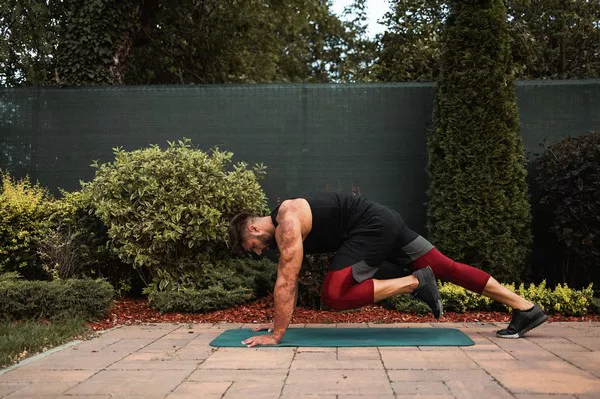Strength training is a fundamental component of fitness regimens that has stood the test of time. Traditional strength training, also known as resistance training, is a structured approach to building muscular strength and endurance using various techniques and equipment. This article delves into the core concepts of traditional strength training, its benefits, techniques, and related variations, offering readers a comprehensive understanding of this essential aspect of physical fitness.
[inline_related_posts title=”SEE ALSO” title_align=”left” style=”list” number=”3″ align=”none” ids=”1444,1357,1337″ by=”categories” orderby=”rand” order=”DESC” hide_thumb=”no” thumb_right=”no” views=”no” date=”yes” grid_columns=”1″ post_type=”” tax=””]
Understanding Traditional Strength Training
Traditional strength training involves performing exercises that target specific muscle groups to enhance strength, tone, and overall muscle mass. Unlike cardiovascular exercises that primarily focus on enhancing cardiovascular fitness, strength training primarily aims to increase muscle power. The practice dates back to ancient times when Greek and Roman athletes used rudimentary forms of resistance training to improve their athletic prowess.
Benefits of Traditional Strength Training
Traditional strength trainin shares many benefits:
1. Enhanced Muscle Strength: The primary goal of traditional strength training is to increase muscle strength. Regular resistance training leads to the recruitment of more muscle fibers, resulting in improved overall strength.
2. Increased Metabolic Rate: Muscle tissue is metabolically active, meaning it burns more calories at rest than fat tissue. Engaging in strength training helps boost the resting metabolic rate, aiding in weight management.
3. Improved Bone Health: Resistance training places stress on bones, stimulating bone remodeling and enhancing bone density. This is particularly beneficial in preventing conditions like osteoporosis.
4. Enhanced Joint Health: When performed with proper technique, strength training can improve joint stability and reduce the risk of injuries by strengthening the muscles and connective tissues around the joints.
5. Functional Fitness: Traditional strength training often involves compound movements that mimic real-life activities. This improves functional fitness, making everyday tasks easier to perform.
6. Boosted Confidence: As individuals notice improvements in their physical strength and appearance, their self-confidence and body image tend to improve as well.
Techniques and Equipment for Traditional Strength Training
There are sevearl techniques and equipments useful for traditional strength training:
1. Free Weights: Barbells and dumbbells are commonly used in strength training. Free weights engage stabilizer muscles, enhancing overall muscle development.
2. Resistance Machines: These machines provide guided movement patterns, making them suitable for beginners or those recovering from injuries. They isolate specific muscle groups for targeted training.
3. Bodyweight Exercises: Exercises like push-ups, squats, and pull-ups use one’s body weight as resistance. These exercises can be performed anywhere and are effective for building functional strength.
4. Isometric Exercises: Isometric training involves holding a position without movement, engaging the muscles statically. Planks and wall sits are examples of isometric exercises.
5. Plyometric Exercises: Plyometrics focus on explosive movements to enhance power and speed. Jump squats and box jumps are examples of plyometric exercises.
6. Progressive Overload: A foundational principle of strength training, progressive overload involves gradually increasing resistance (weight or intensity) to challenge the muscles and stimulate growth.
SEE ALSO: 4 Principles of Strength Training & Application for Health Benefits
Essential Exercises in Traditional Strength Training
There are several exercises that are considered essential in traditional strength training due to their effectiveness in targeting multiple muscle groups and building overall strength. These exercises are often referred to as “compound exercises” because they involve the movement of multiple joints and engage several muscle groups simultaneously. Including these exercises in your routine can provide a solid foundation for strength development. Here are some of the key essential exercises:
1. Squats
Squats are a fundamental lower body exercise that targets the quadriceps, hamstrings, glutes, and lower back. There are variations such as back squats, front squats, and goblet squats, each offering slightly different muscle engagement and targeting.
2. Deadlifts
Deadlifts are excellent for building overall strength and engaging the muscles of the lower back, glutes, hamstrings, and grip. They come in various forms, including conventional deadlifts, sumo deadlifts, and Romanian deadlifts.
3. Bench Press
The bench press is a classic upper body exercise that primarily targets the chest (pectoral muscles), shoulders (anterior deltoids), and triceps. It can be performed with a barbell or dumbbells.
4. Overhead Press (Military Press)
This exercise targets the shoulders, particularly the deltoid muscles. It involves lifting weights overhead, either with a barbell or dumbbells.
5. Pull-Ups/Chin-Ups
Pull-ups and chin-ups are excellent for building upper body strength, particularly in the back, biceps, and shoulders. These bodyweight exercises also engage the core.
6. Rows
Rows, whether performed with a barbell, dumbbells, or a cable machine, are effective for developing the muscles of the upper back, including the latissimus dorsi and rhomboids.
7. Lunges
Lunges are unilateral lower body exercises that engage the quadriceps, hamstrings, glutes, and core. They help improve balance and stability.
8. Dips
Dips primarily target the triceps, chest, and shoulders. They can be performed on parallel bars or using a bench.
9. Bent-Over Rows
This exercise focuses on the muscles of the upper back, including the traps and rhomboids. It can be performed with a barbell, dumbbells, or other resistance equipment.
10. Leg Press
The leg press machine is effective for targeting the quadriceps, hamstrings, and glutes. It provides a controlled environment for lower body strength training.
Programming and Periodization for Traditional Strength Training
Effective strength training programs follow structured approaches to ensure continuous progress and minimize plateaus. Periodization is a strategy that divides training into cycles, each with specific goals and intensities. These cycles usually consist of:
1. Hypertrophy Phase: Focuses on moderate to high repetitions and sets to stimulate muscle growth.
2. Strength Phase: Involves heavier weights and lower repetitions to enhance muscle strength.
3. Power Phase: Emphasizes explosive movements and plyometrics to improve muscle power.
Recommended Schedules for Traditional Strength Training
The recommended sets, reps, and rest intervals for traditional strength training can vary based on individual goals, experience level, and the specific program you’re following. However, here are some general guidelines that can serve as a starting point:
1. Sets and Reps
Hypertrophy Phase (Muscle Growth):
Sets: 3-5 sets per exercise
Repetitions (Reps): 8-12 reps per set
Focus on moderate to heavy weights that challenge your muscles
Strength Phase:
Sets: 3-5 sets per exercise
Reps: 4-6 reps per set
Use heavier weights to work on building maximal strength
Power Phase:
Sets: 3-5 sets per exercise
Reps: 3-5 reps per set
Focus on explosive movements and lighter weights
2. Rest Intervals
Hypertrophy Phase:
Rest: 60-90 seconds between sets
This allows for some recovery while still maintaining the muscle pump and tension.
Strength Phase:
Rest: 2-3 minutes between sets
Heavier weights require more recovery time to perform at your best in each set.
Power Phase:
Rest: 2-3 minutes between sets
Explosive movements may demand more recovery time due to the high intensity.
SEE ALSO: 4 Examples of Strength Training Exercises Designed for You
Safety Considerations for Traditional Strength Training
To reap the benefits of traditional strength training while minimizing the risk of injuries, consider the following safety guidelines:
1. Proper Form: Maintaining proper form during exercises is crucial to prevent injuries. Consider working with a fitness professional to learn correct techniques.
2. Warm-up: Always warm up before beginning a strength training session to prepare muscles and joints for the upcoming workload.
3. Progress Gradually: Avoid the temptation to lift heavy weights too soon. Gradually increase resistance to allow your body to adapt safely.
4. Rest and Recovery: Muscles need time to recover and grow. Incorporate rest days into your routine and prioritize sleep and nutrition.
5. Consultation: If you have pre-existing medical conditions, consult a healthcare provider before starting a new strength training program.
Variations of Traditional Strength Training
Traditional strength training also has several variations:
1. CrossFit: A high-intensity program that combines elements of strength training, cardiovascular exercise, and functional movements.
2. Powerlifting: Focuses on three major lifts: squat, bench press, and deadlift. Powerlifting competitions involve lifting maximum weights in these lifts.
3. Bodybuilding: Concentrates on aesthetic muscle development, often involving isolation exercises and specific training splits.
4. Calisthenics: Utilizes bodyweight exercises to build strength and flexibility, with a focus on mastering advanced movements like muscle-ups and handstands.
5. Strongman Training: Involves unconventional exercises like tire flips, log presses, and atlas stone lifts to showcase brute strength.
Conclusion
Traditional strength training remains a cornerstone of fitness programs for its holistic benefits and time-tested effectiveness. By understanding the techniques, equipment, and safety considerations associated with this practice, individuals can embark on a journey to improved strength, health, and confidence. Whether pursuing powerlifting, bodybuilding, or simply aiming for functional fitness, the principles of traditional strength training can be adapted to various goals, making it a versatile and enduring approach to physical well-being.
[inline_related_posts title=”Related Topics” title_align=”left” style=”list” number=”3″ align=”none” ids=”1475,1448,1421″ by=”categories” orderby=”rand” order=”DESC” hide_thumb=”no” thumb_right=”no” views=”no” date=”yes” grid_columns=”1″ post_type=”” tax=””]
































